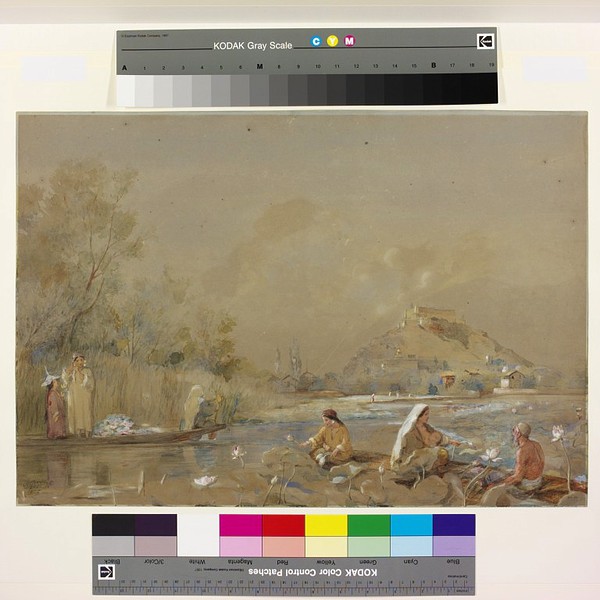William Carpenter Junior (1818-1899) was a water colorist, born in London to a portrait painter Margaret Sarah Carpenter who had come to India first time in 1850. William Carpenter spent several years in northern part of India between 1850 and 1857. Some extract from the book, “INDIAN LIFE AND LANDSCAPES BY WESTERN ARTISTS” is written as under :-
WILLIAM CARPENTER IN KASHMIR
The first of at least three annual trips to Kashmir was probably in 1853, when he may have stayed for many months. Surrounded by a continuous range of snowy peaks, the oval valley of Kashmir, the Dal Lake with its floating gardens of lotuses and lilies, and the delightful climate especially in early summer and autumn had attracted European travellers for several centuries. The Emperor Akbar conquered the country in 1588, and the Fort of Hari Parbat on an isolated hill west of the Dal Lake was built subsequently as a Mughal stronghold. It was Jahangir, however, who created the pleasure gardens, notably the Shalimar Bagh on the shore of the lake, where he regularly spent the summer months. Romantic concepts associated with the Vale of Kashmir developed, finding expression in literature. François Bernier, for example, was one of the earliest Europeans to visit and describe the region. One of the most popular and widely read poems of the nineteenth century was Thomas Moore’s Lalla Rookh, which had five editions within eight months of its first appearance in 1817. Based on various travellers’ tales and pictorial sources the poem focuses on Emperor Aurangzeb’s daughter, Lalla Rookh, and provides a generalized view of the Orient using exotic imagery and a mixture of Indian, Persian and Turkish elements. While travelling through Kashmir in 1838, Godfrey Thomas Vigne wrote approvingly: ‘At one glance we have before us the whole of the localities described in Lalla Rookh. I use the word described, for there is great justice in the ideas of scenery to be collected from the poem.’ As one of the early explorers in the region, Vigne was probably among the first observers to be captivated by Moore’s romantic vision of Kashmir. It was only after the annexation of the Punjab in 1846 that the area became more accessible to European travellers of the nineteenth century. That Carpenter had also read Lalla Rookh is obvious from the title to one of his watercolours, ‘The Shalimar garden; scene of the festivities at the marriage of Lalla Rookh, daughter of Aurunzebe’. Judging from the sequence of the Kashmir watercolours listed in Carpenter’s exhibition catalogue of 1881, these were almost certainly displayed as a group. Besides general views of the valley and lakes, Shah Hamadan’s Mosque, they included the quaint wooden houses and streets of Srinagar, bridges across the Jhelum River and Mar canal, Kashmiri women and nautch girls, and the Temple of the Sun at Martund, to which Carpenter made a special excursion. He also obviously met the Governor of Kashmir, Nawab Shaikh Imam-ud Din.
Source : From the V&A’s collections
















One thought on “William Carpenter’s Kashmir Paintings c1855”